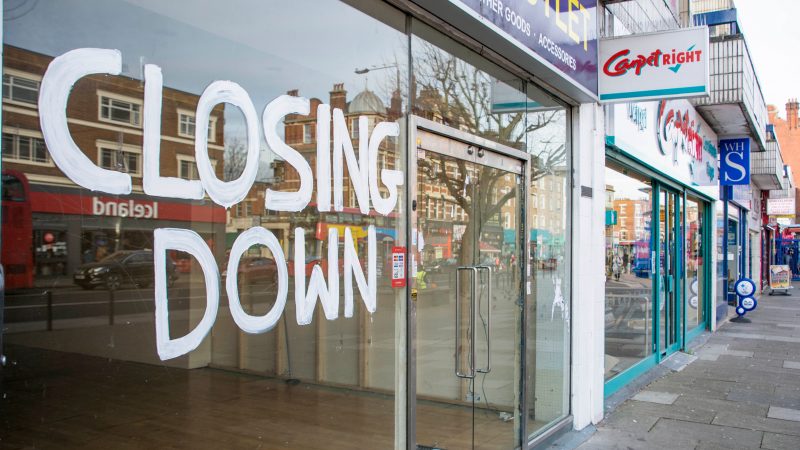
Since the excellent local election results, there’s been a renewed effort by the fourth estate to try – again – to define “Starmerism”.
Tom McTague had this excellent article on Unherd and George Eaton also had a crack at coming up with a tidy-ish summary in the New Statesman. Both focused, at least in part, on a subtle but identifiable focus on the working class, on communitarianism and on place.
Neither suggested Keir Starmer was going full Blue Labour, but both indicate – correctly, in my opinion – that the Labour project in 2024 is very much not New Labour 2.0.
What would a successful ‘decade of national renewal’ look like?
As I have written before, you’ve been able to see this instinct in Starmer’s speeches (pretty much since the excellent Alan Lockey took over). And, as McTague suggests convincingly, you can see it in the world view of Morgan McSweeney.
All of which leads to an interesting question. If this is true – if a Starmer government will have its focus on the places that have been most left behind by unfettered markets – then what would a successful “decade of national renewal” look like? What would Sir Keir, stepping down after two terms of government, judge to be his metric of success?
Of course, productivity and economic growth will be key. What would follow this economic uptick – and the corresponding tax receipts – would surely be the rebuilding of the national public services. Better hospitals, better police, better transport etc. None of this is to be sniffed at. But so much, so Blairism.
But as Tony Blair and his people learnt, better public services don’t automatically translate into happier, more sustainable communities. The economic divide in Britain between those communities who benefitted from globalisation and those who did not appeared to voters to grow during Blair’s years.
Starmer and his people get that. That is one of the reasons that an industrial strategy is so central to the way they articulate how they want to govern. Unlike Blair, they don’t think that we should learn to love globalisation and hope that its rising tide will lift all our ships. For Starmer, this means managing the market. Done right, this ought to see more jobs and more investment flowing into the right places.
Starmer is right to prioritise tackling antisocial behaviour
But this in itself will not automatically mean happier, more confident and prouder places. The voters of Derby, Darlington and Doncaster do of course want more jobs and shorter waiting lists, but they also want to reclaim their hometowns.
Extensive polling and qualitative research by Public First, where I am a partner, has shown this for years. Normal voters in the towns of provincial England – who deserted Labour in 2019, but who now appear to be coming back – don’t particularly want their towns and small cities to be like Fulham or Finchley. They want them simply to be safe and bustling places in which they can feel pride.
Antisocial behaviour comes up time and time again in focus groups. The phrase might feel slightly sour in the mouths of many Labour members, but that is why a ‘crackdown’ is there slap bang in the middle of this week’s not-pledge-pledge card.
I hear way way too often that normal people simply don’t feel safe on their high street anymore. Starmer’s Labour sees that too – and is completely correct to prioritise doing something about it.
Reversing the decline of high streets will take policy imagination
However, reviving our town centres and high streets is a double-headed challenge. Reducing low-level crime should be doable with a renewed focus on neighbourhood policing (something the Tories have emasculated), but that is only step one.
Step two is arguably harder. Voters endlessly complain how boarded-up shops and metal shutters have replaced disappearing banks, bars and retailers on their high streets.
They are right, of course: the rise in online retail, accelerated by the pandemic lockdowns, has made the economic magnetism of town centres much weaker. Finding ways to reverse this will take real policy imagination, but it shouldn’t make it any less of a focus.
Britain’s high streets are depressed and in some places almost dystopian. They are a tangible manifestation of the state of the nation. Aimless and broken.
Blair brought us many years of national economic growth and better public services. Starmer will hope to do the same. But we’ll only know if Starmerism is working if he has restored the pride of Britain’s working class towns.
If you have anything to share that we should be looking into or publishing about this or any other topic involving Labour, on record or strictly anonymously, contact us at [email protected].
Sign up to LabourList’s morning email for a briefing everything Labour, every weekday morning.
If you can help sustain our work too through a monthly donation, become one of our supporters here.
And if you or your organisation might be interested in partnering with us on sponsored events or content, email [email protected].




More from LabourList
‘It’s one year since I became Britain’s youngest MP. Here’s what I’ve achieved so far’
Tribute: ‘David Lipsey’s joie de vivre is missing in Labour politics today’
Ellie Reeves: ‘One year in, the next phase begins – focused on living standards’